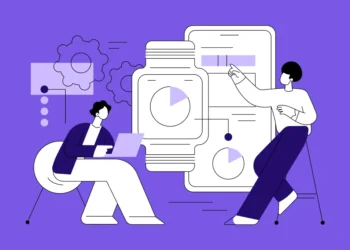In this fast-paced world of e-commerce, your website is just an online store. So you are wrong. It’s your brand’s first impression, especially if you are into Shopify, because design plays a vital role in grabbing attention, building trust, and converting visitors into loyal customers. This is all you want, right?
If you have a poorly designed and outdated Shopify store, it may cause you
high bounce rates, slow loading times, and ultimately lost sales. That’s where the Shopify website redesign comes in. It’s not just about changing your site’s appearance, but also about enhancing the user experience, improving navigation, and making your store work smarter.
But wait, redesigning is not the only thing. Along with redesigning your store, creating custom product templates can significantly elevate how you present your products. These templates can help you in several ways, such as with unique layout ideas and even personalised features like tabs, bundles, and product videos.
Why Redesign Your Shopify Website?
Your website will be the first impression of your business, and first impressions matter a lot. The first thing the user will check out is how trendy and classy your design is. Most users don’t trust websites with outdated or boring designs. Modern looks scream class and professionalism, which is exactly what every user is looking for nowadays.
Redesigning is not just about adding new colours or icons to enhance the website’s aesthetics; it’s also about rethinking the navigation and layout to make it easier for users to find products. The smoother the UX, the higher the conversion rate. A mobile-friendly layout is like a cherry on top.
The main benefit of redesigning is that the Spotify online store comes with new sections and features. By redesigning, you can upgrade and unlock all the latest features. Apart from this, you can work on redesigning key elements, such as the CTA button, or you can enhance elements like trust badges, reviews, and FAQs.
Challenges and Solutions in Shopify Redesign

1. Confusion About Design Direction
Problem: Nowadays, the market offers many options for designing; it’s indeed a good thing, but it causes a lot of confusion, and usually, beginners end up making the wrong choice. Deciding whether to make the website more minimalistic, bold, colourful, product-focused, or classy is a real struggle.
Solution: Before starting the redesign, think about your goals and target audience, and the most crucial step is analysing your competitors. It doesn’t make you a cheater, but an intelligent person who is learning and growing.
2. Existing Features Break After Redesign
Problem: This is the most common issue that arises during website redesign, where new changes disrupt the existing structure. Functions like add to cart, filters, and payment options stop working, creating a significant bug that frustrates customers.
Solution: Before taking the first step towards redesigning, take a backup of the current design and pattern. Don’t finalise the new design without testing it in the staging version, which is a duplicate theme. After redesigning, check out important features like flow, cart, search, filters, and especially payment options in both desktop and mobile.
3. Slow Website Speed
Problem: After redesigning, the website starts looking heavy or bulky. Due to the increasing image size, activation of multiple functions or features, and especially bloating of the code, the website starts lagging, and the loading speed slows.
Solution: For large image sizes, you can compress the image using Shopify’s image optimiser apps or TinyPNG. Don’t forget to remove unused CSS/JS from the theme code.
4. SEO Drop After Redesign
Problem: When redesigning your website, certain elements often change, such as URLs, headings, and image alt tags. These changes confuse search engines like Google, causing your search rankings to drop and your website traffic to decrease.
Solution: If any URLs have changed during the redesign, make sure to set up 301 redirects so visitors and search engines are sent to the correct new pages.
Recheck the SEO for every product and page, including the title tags, meta descriptions, headings (H1, H2), and image alt texts.
Once the redesign is complete, run a full SEO audit using tools like Shopify SEO apps or Screaming Frog. This will help ensure your website keeps its search engine rankings even after the redesign.
5. Inconsistent Branding
Problem:
If each page of your store looks different, it creates a weak overall impression. Customers may not feel a clear brand identity, which affects trust and recognition.
Solution:
Create a style guide that defines your brand’s fonts, colours, button shapes, spacing, and heading styles. Make sure this guide is followed across all product pages and templates.
Use Shopify 2.0’s sections feature to keep the design consistent across the site and make it easier to manage in the future. This helps build a strong, unified brand image.
Common Mistakes to Avoid in Shopify Redesign

Redesigning your Shopify website can bring fresh life to your store—but only if it’s done right. Many people jump into the process with excitement but end up making small mistakes that cost them sales, time, and user trust. Here are some common mistakes you should stay away from:
1. Redesigning Without a Clear Goal
A redesign isn’t just about making your site “look better.” If you’re not clear about why you’re redesigning, whether it’s to improve conversions, speed, mobile usability, or navigation, you might end up spending time and money without tangible results.
Tip: Set clear goals. Know what problems you want to fix or what improvements you expect.
2. Ignoring Mobile Optimisation
More than half of online shopping happens on mobile. Yet, many redesigned websites still look and work poorly on smartphones.
Tip: Test your design on multiple mobile devices. A mobile-first approach often works best for Shopify stores.
3. Overloading with Fancy Features
Animations, pop-ups, and effects may seem attractive, but too many of them slow down your website and frustrate users.
Tip: Focus on user experience. Could you keep it clean, fast, and easy to use?
4. Not Testing the New Design
Many store owners forget to properly test their new layout before launching. This leads to broken links, missing images, or even checkout issues.
Tip: Do a complete walkthrough of your site before going live—check product pages, cart, checkout, and contact forms.
5. Forgetting SEO
Changing URLs, titles, or site structure without an SEO plan can cause your Google rankings to drop.
Tip: Use 301 redirects, update meta tags, and ensure your new design is SEO-friendly.
6. Not Involving Users or Getting Feedback
You may like your new design, but that doesn’t mean your customers will.
Tip: Before finalising, share a demo version with a few users or your team. Gather honest feedback and adjust accordingly.
Conclusion
So, a Shopify redesign isn’t just about looks, it’s about improving user experience, performance, and sales. Avoiding common mistakes, such as ignoring mobile users, skipping SEO basics, or losing brand consistency, can make all the difference. If you’re planning a revamp, it’s always a smart move to partner with a professional Shopify website development company that understands your goals and audience. For tailored solutions and expertise, especially if you’re looking for Shopify development in Bangalore, make sure to choose a team that blends creativity with conversion-focused design.















